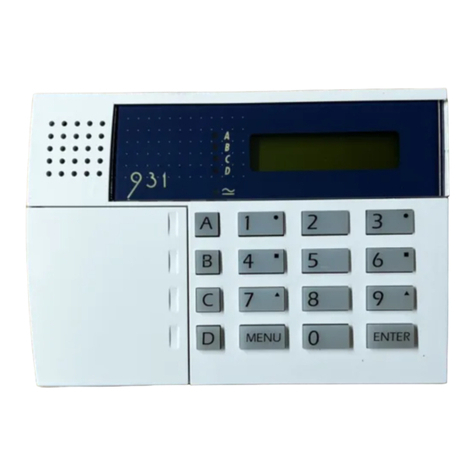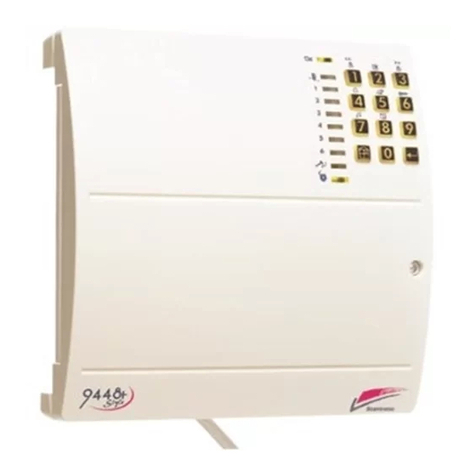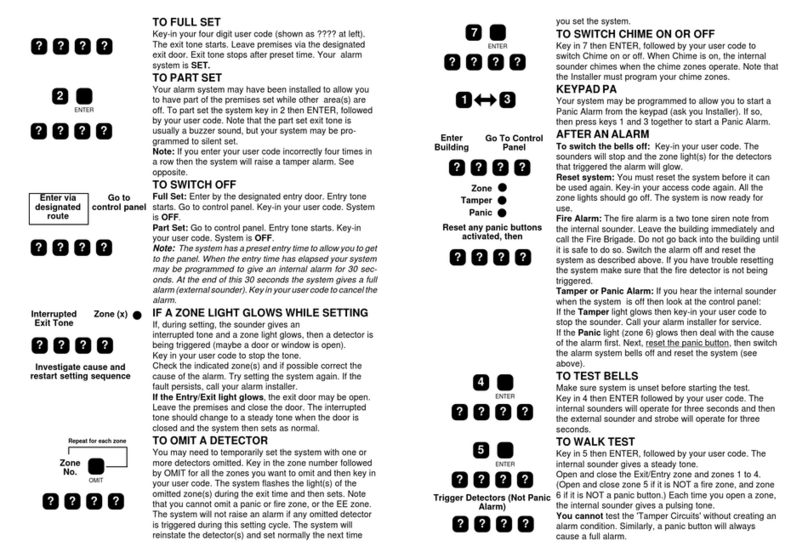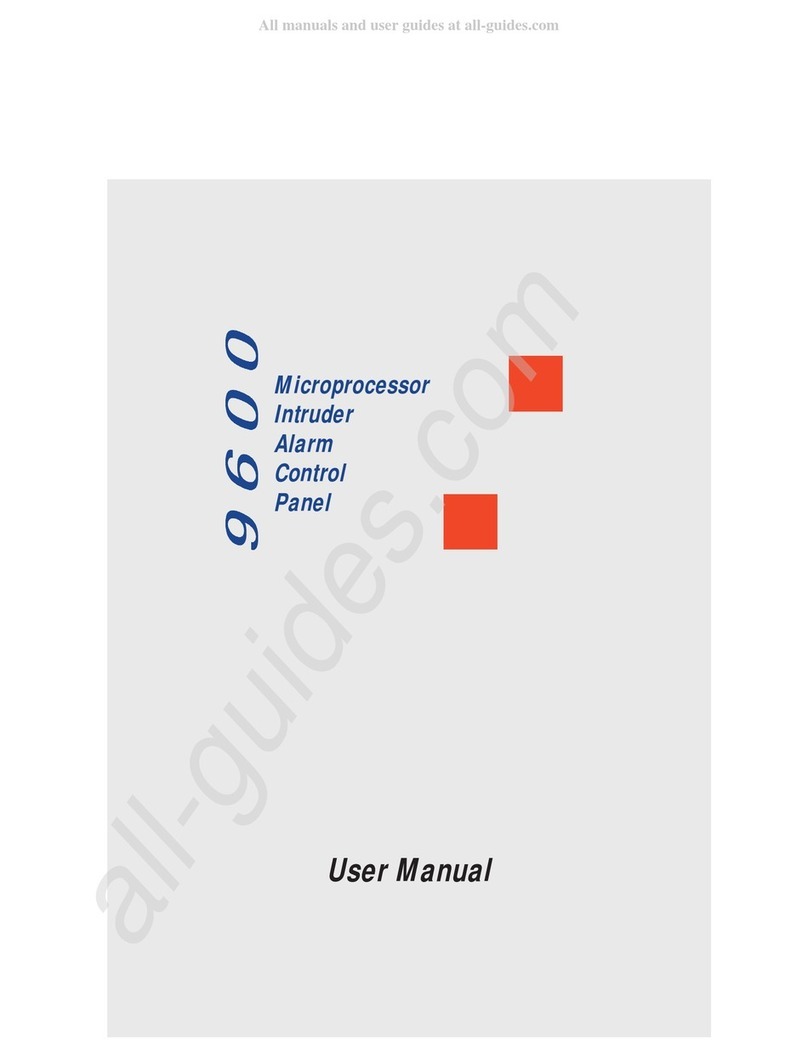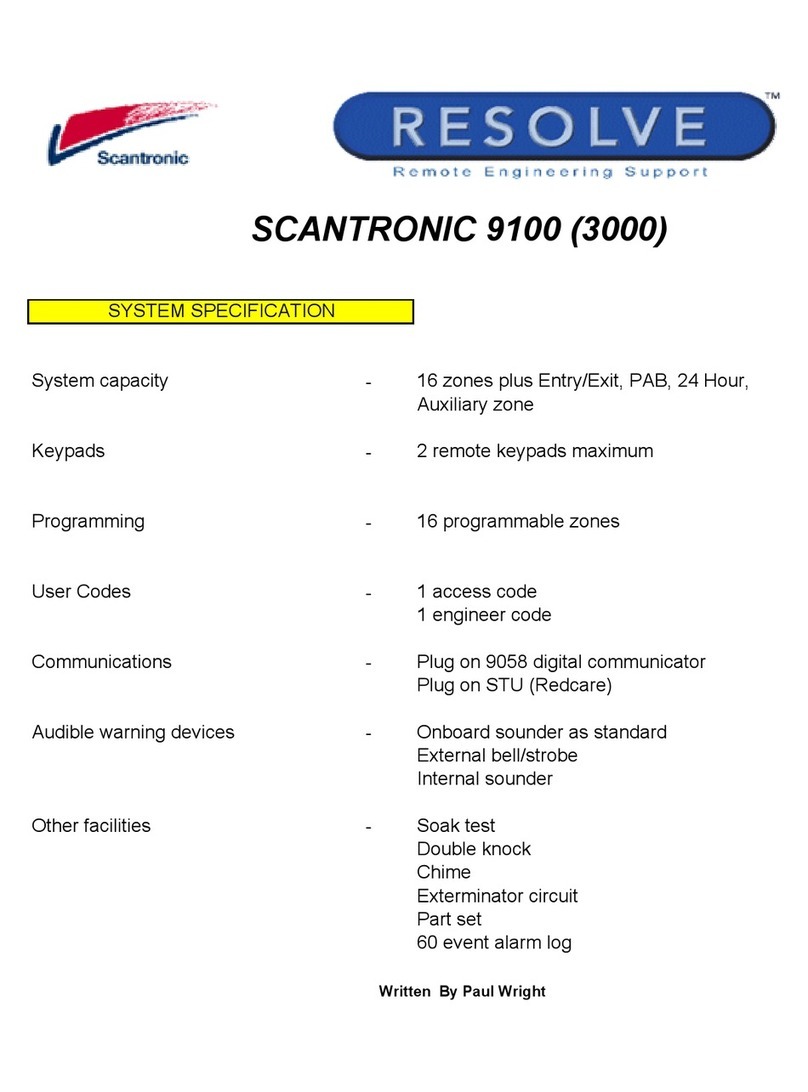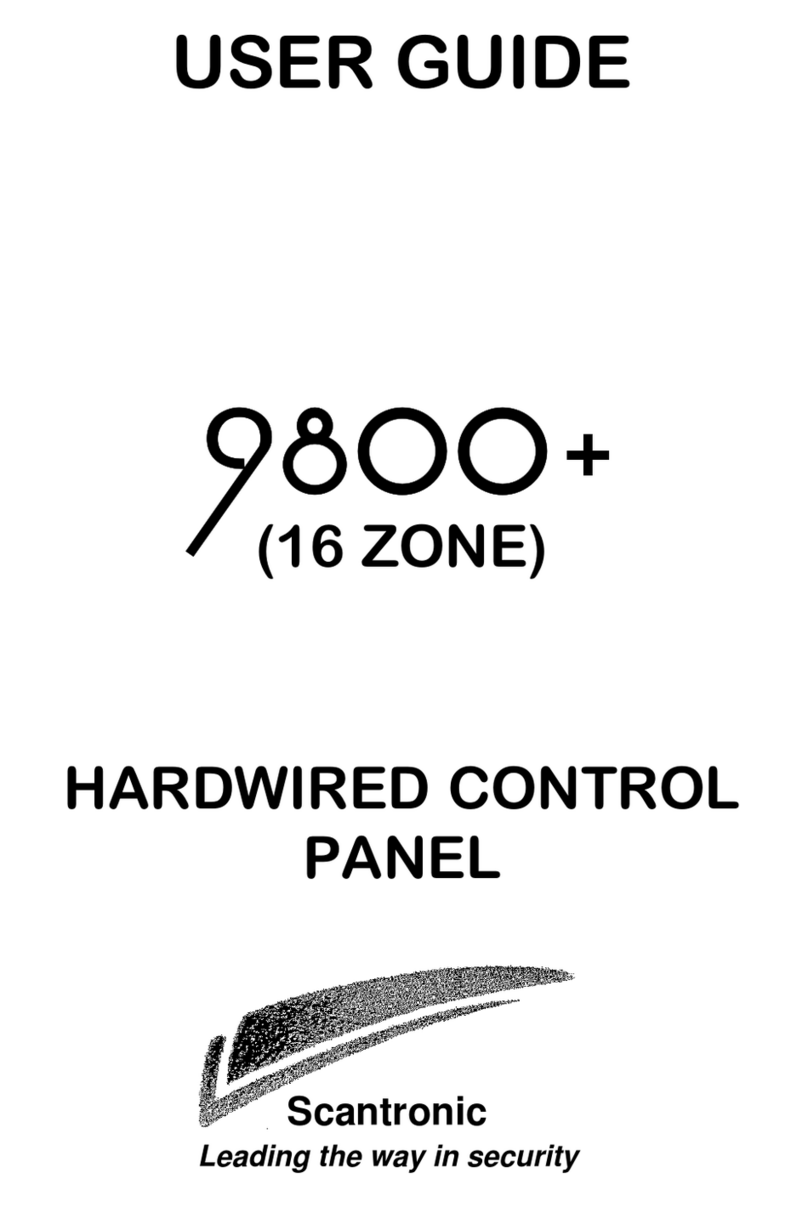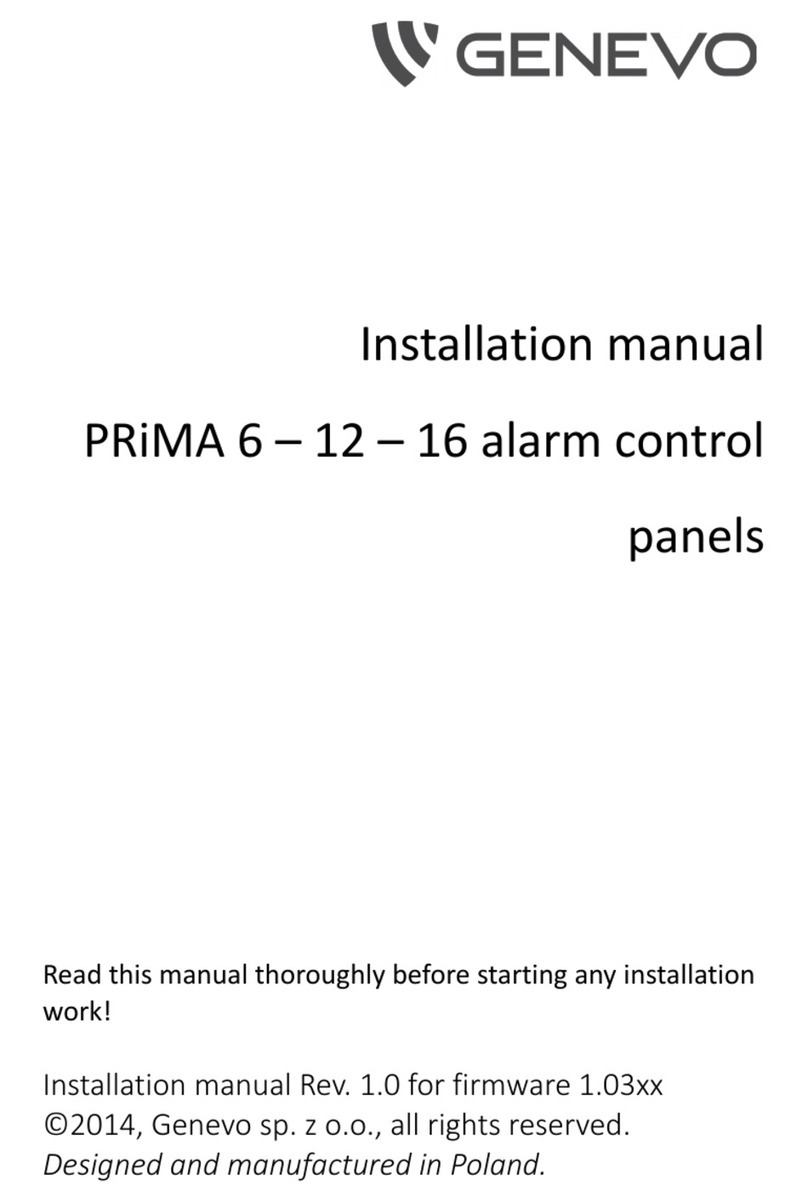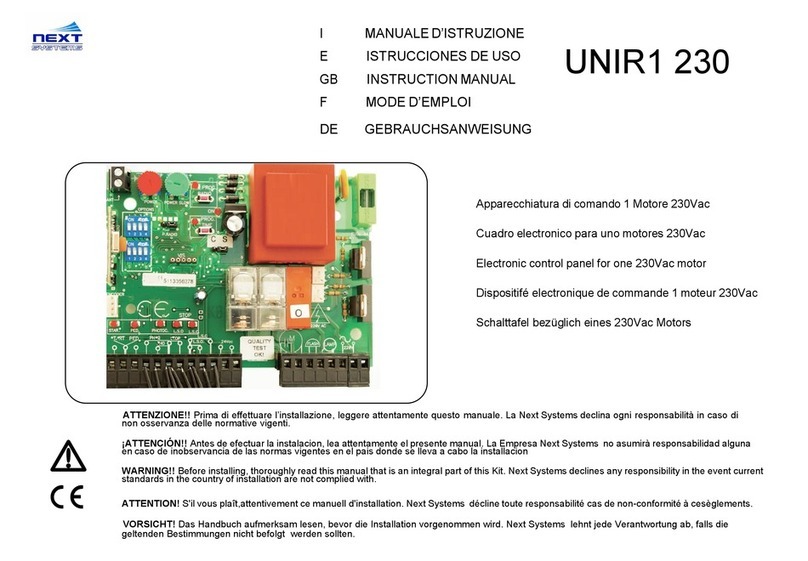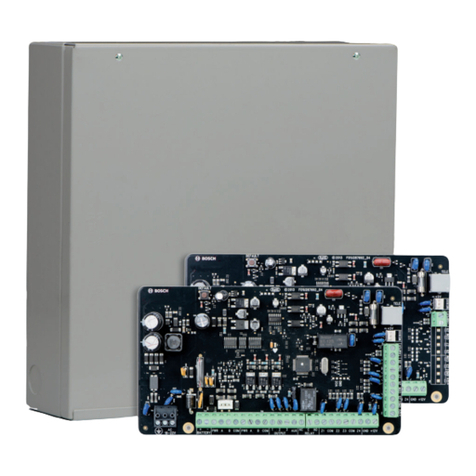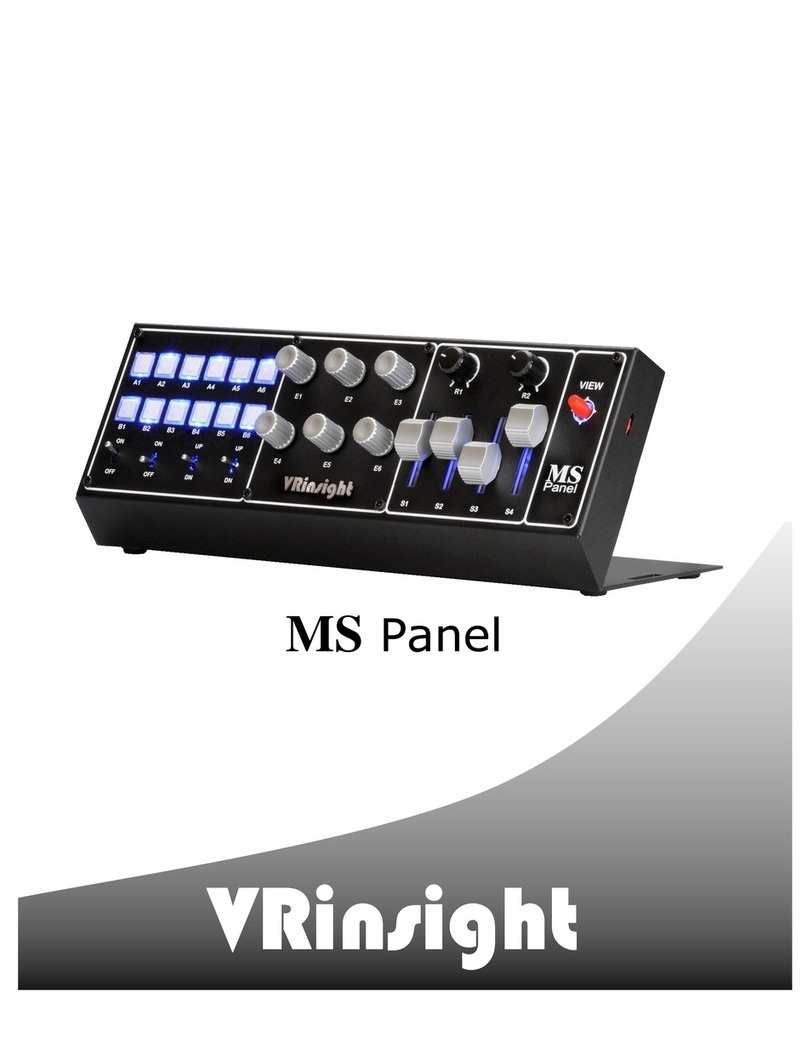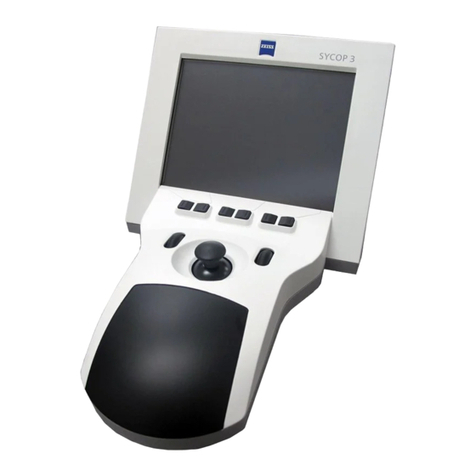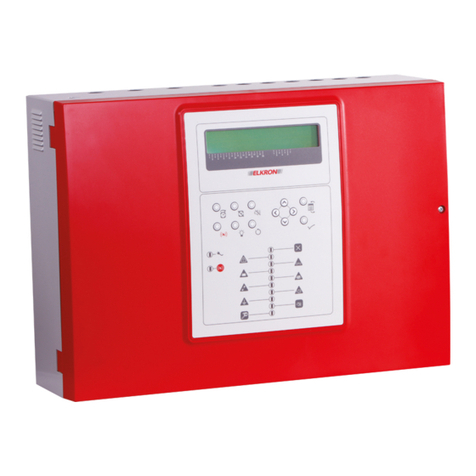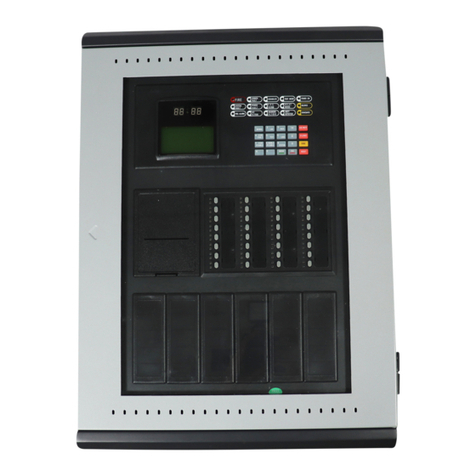
a) PIR Set Latch. When a zone connects to more than one detector the
panel cannot identify which detector in the zone caused an alarm. To
help identify which detector caused an alarm connect the programmable
output to the Latch input of all detectors in the zone. When pro-
grammed for Set Latch the panel makes the output active at the end of
the exit time, resetting the detectors. When a detector causes an alarm,
the panel deactivates the output. This latches the indicator of the detec-
tor that caused the alarm, and inhibits all the other detectors connected
to the zone. The panel also deactivates the output when in Day mode.
b) Shock sensor. Stand-alone shock sensors normally latch when activated.
You can make the panel reset the sensors by connecting a programma-
ble output to their positive supply. The panel deactivates the output for
six seconds at the start of the exit time, clearing any latched devices.
c) Strobe. Used to trigger an external strobe when a detector causes an
alarm.
d) Internal alarm. The panel activates this output whenever it triggers the
internal speaker.
Part Set. When part set the panel responds only to detectors that are pro-
grammed as part set zones. You can program the panel with the following
options:
• Part set Alarm response can be full or internal only.
• The Entry/Exit zone can be programmed to become an Instant
Alarm zone during part set, or remain as an Entry/Exit.
• The Entry Route zone can be programmed become an an
Entry/Exit zone during part set, or remain as an Entry Route.
• Exit mode can be Instant Set, Silent Set, or the same as Full Set.
Personal Attack. The user can trigger a PA alarm either by pressing a PA but-
ton, or by pressing keys 1 and 3 together on the panel or remote keypad. You
can program the panel to respond to a PA by:
• EITHER giving either a full alarm.
• OR remaining silent during a PA alarm if the panel is connected to
a 660 Speech Communicator.
In addition, you can disable the PA buttons on the remote keypads through
programming.
Rearm Mode. You can program the panel to re-arm itself after raising an
alarm. The options are: never (keypad reset only), once, twice, three times or
always.
Note: This feature does not rearm the speech communicator output.
Remote Keypads. The 601/602 can support up to two 625 remote keypads.
The keypads provide the same keys, displays and sounders as the main panel
4
Introduction
496219 Issue 1
601 installation 23/10/1998 10:09 Page 4

